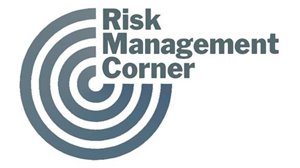 As your most valuable asset, your employees’ health and well-being should be at the top of your list when it comes to successful workplace safety. Back pain accounts for a major portion of all recorded absences from work, and is the third leading cause of physical limitation and disability1. By helping your employees understand the value of safe lifting techniques, you can help break old habits, leading to new, safer ways to lift heavy or unwieldy items. Evaluate your risk management safety program and consider the following:
As your most valuable asset, your employees’ health and well-being should be at the top of your list when it comes to successful workplace safety. Back pain accounts for a major portion of all recorded absences from work, and is the third leading cause of physical limitation and disability1. By helping your employees understand the value of safe lifting techniques, you can help break old habits, leading to new, safer ways to lift heavy or unwieldy items. Evaluate your risk management safety program and consider the following:
Safety Meetings. Does your workplace hold frequent safety meetings? Do employees feel comfortable asking for assistance when faced with large lifting tasks? Conducting safety meetings on proper lifting techniques and promoting long-term back health can help educate and re-familiarize employees with the value of back health and safety in the workplace.
Job Hazard Analysis. Is your workplace laid out in a way that can make lifting easier? Do employees have to manually and repeatedly move items around? Conducting a job hazard analysis to identify lifting dangers before they occur can help prevent unnecessary labor and severe or disabling injuries.
Items and Tools. Are there items available for employees to take advantage of when working, such as supportive belts, weight scale gages, posture reminders, adjustable carts and forklifts, or conveyer belts? Providing these alternatives to help minimize how far employees must move while lifting, can help to create a more supportive environment, literally and physically, for your employees.
Helpful back safety and lifting tips can include, but are not limited to:
- Maintaining good physical shape
- Thinking critically before acting
- Bending the knees and using a firm grip
- Testing the weight of an object before attempting to lift it
- Pulling the load before lifting, and holding the load close to the body
- Keeping the feet close to the load, but far apart enough for stability
- Lifting by primarily straightening the legs and slightly unbending the back
- Enlisting the help of a lifting partner or using mechanical aid, if available
Remember: a good safety program involves management and employees working together to actively help reduce accidents and injuries. Your employees — and their backs — will appreciate it in the long run.
1. Federated Back Safety Training Data 2019-2020
